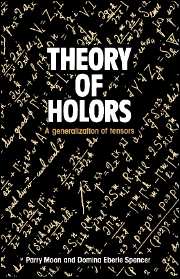11 - Euclidean space
Published online by Cambridge University Press: 16 October 2009
Summary
This chapter concludes our survey of spaces. In Chapter 9, we started with an arithmetic n-space and introduced a linear connection. This was followed by Chapter 10, involving a metric. The present chapter deals with the special class of Riemannian spaces where rectangular coordinates are possible. The development for Chapters 9–11 proceeds as follows:
(a) arithmetic n-space Xn;
(b) introduction of an arbitrary linear connection Γijk, resulting in spaces of linear connection Ln;
(c) introduction of an arbitrary metric tensor gij, resulting in Riemannian space Vn; and
(d) consideration of the special case of (c), where gi′j′, is the unit matrix. This is Euclidean space Rn.
The process consists in starting with the most general case and adding restrictions step by step. Note that in linearly connected spaces, the linear connection Γijk is completely arbitrary. It may be symmetric or not; its merates may be chosen at random. But when we take the step to Riemannian space, Γijk is determined uniquely by the metric tensor gij, according to Equation (10.31). The g's are arbitrary in a Riemannian space; but once the metric tensor is chosen, Γijk is fixed.
We now come to Euclidean space. In a sense, all properties of Euclidean space have been treated in Chapter 10, since Euclidean space is merely a special case of Riemannian space.
- Type
- Chapter
- Information
- Theory of HolorsA Generalization of Tensors, pp. 346 - 375Publisher: Cambridge University PressPrint publication year: 1986



